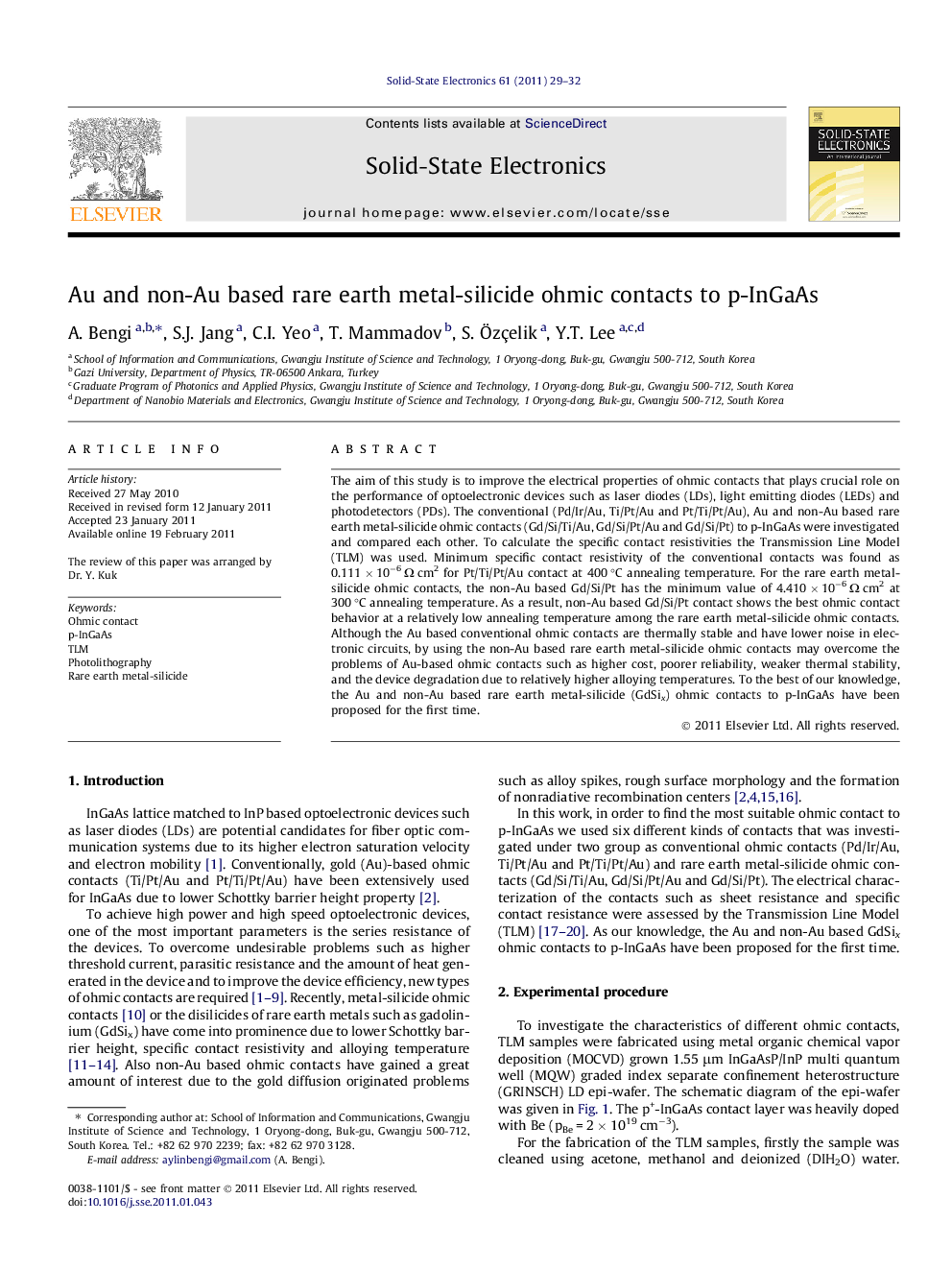| Article ID | Journal | Published Year | Pages | File Type |
|---|---|---|---|---|
| 747024 | Solid-State Electronics | 2011 | 4 Pages |
The aim of this study is to improve the electrical properties of ohmic contacts that plays crucial role on the performance of optoelectronic devices such as laser diodes (LDs), light emitting diodes (LEDs) and photodetectors (PDs). The conventional (Pd/Ir/Au, Ti/Pt/Au and Pt/Ti/Pt/Au), Au and non-Au based rare earth metal-silicide ohmic contacts (Gd/Si/Ti/Au, Gd/Si/Pt/Au and Gd/Si/Pt) to p-InGaAs were investigated and compared each other. To calculate the specific contact resistivities the Transmission Line Model (TLM) was used. Minimum specific contact resistivity of the conventional contacts was found as 0.111 × 10−6 Ω cm2 for Pt/Ti/Pt/Au contact at 400 °C annealing temperature. For the rare earth metal-silicide ohmic contacts, the non-Au based Gd/Si/Pt has the minimum value of 4.410 × 10−6 Ω cm2 at 300 °C annealing temperature. As a result, non-Au based Gd/Si/Pt contact shows the best ohmic contact behavior at a relatively low annealing temperature among the rare earth metal-silicide ohmic contacts. Although the Au based conventional ohmic contacts are thermally stable and have lower noise in electronic circuits, by using the non-Au based rare earth metal-silicide ohmic contacts may overcome the problems of Au-based ohmic contacts such as higher cost, poorer reliability, weaker thermal stability, and the device degradation due to relatively higher alloying temperatures. To the best of our knowledge, the Au and non-Au based rare earth metal-silicide (GdSix) ohmic contacts to p-InGaAs have been proposed for the first time.
Research highlights► InP/InGaAs laser diodes are potential candidates for fiber optic communication systems. ► Conventional ohmic contacts have been extensively used due to lower Schottky barrier height. ► To improve LD performance, one of the most important parameters is series resistance of the device. ► Recently, disilicides of rare earth metals have come into prominence. ► They have lower Schottky barrier height, specific contact resistivity and alloying temperature.
